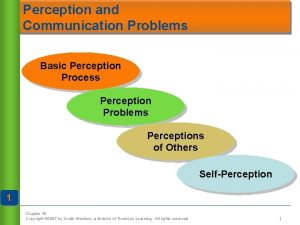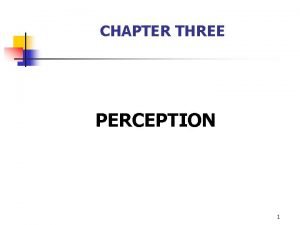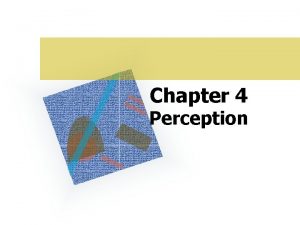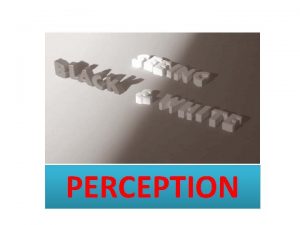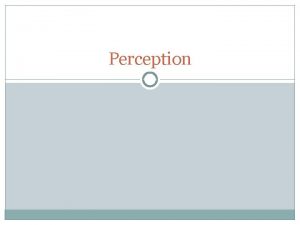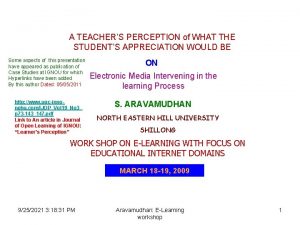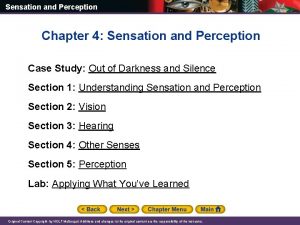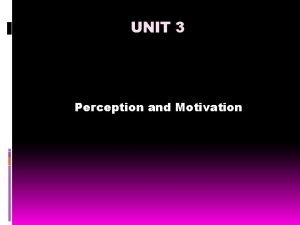STUDENTS AND TEACHERS PERCEPTION ON THE IMPLEMENTATION OF





































- Slides: 37

STUDENTS’ AND TEACHERS’ PERCEPTION ON THE IMPLEMENTATION OF THE ZERO BASED GRADING SYSTEM

Antonio Anne Margarette Madalang Kyle Marron Ritual Krizza Researchers |

The Problem and Its Setting CHAPTER 1

Statement of the Problem: This study aims to determine the perception of the students and teachers on the implementation of the zero based grading system. Specifically, this study will answer the following question: 1. Do the Adamsonian students and teachers believe that the implementation of the zero based grading system is an effective way to improve the quality of education? Why? 2. Do the Adamsonian students believe that the implementation of the zero based grading system could be a great advantage to their careers after they graduated? Why?

3. Do the Adamsonian teachers believe that the implementation of the zero based grading system is reliable or reasonable enough to evaluate the performances of their respective students? Why? 4. Do the Adamsonian teachers and students believe that the implementation of the zero based grading system could be a major problem in the future? Why? 5. How do the Adamsonian students and teachers find the new grading system compared to the previous grading system used by the university.

Scope and Limitation: The research will be conducted in Adamson University – Ermita, during the school year 2012 - 2013. The study will not focus on the advantages and disadvantages of the implementation of the zero based grading system but instead, on the perception of the students and professors on the implementation of the zero based grading system. The study will also measure how many of the students and teachers agree or disagree with the implementation of the zero based grading system. The study will involve dissemination of survey form to the students and professors in various level and programs which will help the researchers in gathering information.

Research Methodology CHAPTER 3

The Research Design The research is all about Students’ and Teachers’ Perception on the Implementation of the Zero Based Grading System. The research used qualitative-descriptive research design in which the data that we had gathered will be interpret and explained in a descriptive, comparative and narrative form.

The Respondents The target respondents of the research are the students and teachers of the Adamson University because the researchers are aware of their capabilities to give information aside from using books, internet and electronic resources, periodicals and news articles. 50 student respondents will be selected and will include 1 st year student to 5 th year student of the Adamson University that will came from different courses and will represent the perception of the Adamsonian students as a whole. 10 teacher respondents of various subjects will be selected to represent the perception of the Adamsonian teacher as a whole.

Instruments Used Aside from collecting related literatures from internet and electronic resources, scanning books that features the topic and compiling periodicals and news articles to gather details about the topic, the researchers have also made survey forms, one for the student respondent and one for the teacher respondent and then we have conducted survey to gather data that will help us to achieve the goal of our research.

Statistical Treatment The data gathered by the researchers from the student and teacher respondents will be tallied to get the right distribution of the students and teachers in accordance to their perceptions and will serve as the answers of from the questions which the research aims to provide. The results will be analyzed and compared according to distinctions of the respondents. Data gathered will be presented using pie or bar graph to get the accurate and precise percentage of the results and to further provide an easy understanding to the intended readers of the research. Answers will then be presented in descriptive, comparative and narrative form. The following formula is used by the researchers to formulate the percentage value of the data gathered: Where: P= Percentage Value F= Frequency T= Total Number of Respondents

Presentation, Interpretation, and Analysis of Data CHAPTER 4

Graph 1: The Number of Student Respondents According to Their Courses. Education: 6 8% Electronics and Communications Engineering: 4 12% Civil Engineering: 4 8% Nursing: 4 8% Computer Engineering: 3 38% Economics: 3 8% Mechanical Engineering: 3 6% 6% 6% Others: 19 Not Specified: 4 The graph shows the number of student respondents according to their courses. Out of 50 respondents, 6 or 12% of it are Education students, while 4 or 8% each of it are Electronics and Communications Engineering, Civil Engineering and Nursing students. 3 or 6% each of it are Computer Engineering, Economics and Mechanical Engineering students while the 19 or 38% of it represents students from various courses such as Architecture, Chemical Engineering, Accountancy, Electrical Engineering and etc. 4 or 8% of the total student respondents failed to specify their current course on the survey form given by the researchers.

Graph 2: The Number of Student Respondents According to Year Level. 10% 16% First Year: 8 Second Year: 10 18% 20% Third Year: 18 Fourth Year: 9 Fifth Year: 5 36% The graph shows the number of student respondents according to year level. Out of 50 student respondents participated on the survey conducted by the researchers, 18 or 36% of it are third year students, while 10 or 20% of it came from second year students. 9 or 18% of it are fourth year students, while 8 or 16% of it came from the first year student. The numbers of fifth year students who have participated are only 5 or 10% of the total respondents.

Table 1: The Distribution of Students’ Responses if they believe that the implementation of the zero based grading system is an effective way to improve the quality of education. Answer on Question Number 1 Frequency Percentage YES 36 72% NO 14 28% The table shows the distribution of student respondents according to their answers on the first question given on the survey form. The result confirmed that out of 50 student respondents participated on the survey conducted by the researcher, 36 or 72% of it said YES while 14 or 28% of it said NO.

Table 2: The Distribution of Students’ Responses if they believe that the implementation of the zero based grading system could be a great advantage to their career after they graduated. Answer on Question Number 2 Frequency Percentage YES 37 74% NO 13 26% The table shows the distribution of student respondents according to their answers on the second question given on the survey form. The result confirmed that out of 50 student respondents participated on the survey conducted by the researcher, 37 or 74% of it said YES while 13 or 26% of it said NO.

Table 3: The Distribution of Students’ Responses if they believe that the implementation of the zero based grading system could be a major problem in the future. Answer on Question Number 3 Frequency Percentage NO 37 74% YES 13 26% The table shows the distribution of student respondents according to their answers on the third question given on the survey form. The result confirmed that out of 50 student respondents participated on the survey conducted by the researcher, 37 or 74% of it said NO while 13 or 26% of it said YES.

Table 4: The Distribution of Students’ Responses According to the Question “How do you find the new grading system compared to the previous grading system used by the university? ” Answer on Question Number 4 The new grading system is much difficult and strict than the previous. The new grading system is much better and fair compared to the previous. The new grading system encourages more students to study hard. Do not know The new grading system is not properly oriented and is complicated. The new grading system is unfair. No difference at all Frequency Percentage 22 44% 10 20% 9 18% 4 8% 3 6% 1 2%

The table shows the distribution of student respondents according to their answers on the fourth question given on the survey form. The result confirmed that out of 50 students, 22 or 44% of it claimed that the new grading system used by the university is more difficult and strict while 10 or 20% said that the new grading system is much better compared to the previous one. 9 or 18% of the respondents claimed that the new grading system encourages the student to study hard and exert more effort while 9 or 18% have also claimed that they do not know the previous one. 4 or 8% of the respondents said that the new grading system is not properly oriented and said that the new grading system is complicated while 3 or 6% said that the new grading system is unfair. 1 or 2% of the student respondent said that there is no difference at all between the present and previous grading system.

Graph 3: The Number of Teacher Respondents According to the Number of Years Stayed in Adamson University. 10% 1 year below: 1 30% 1 -2 years: 4 40% 20% 3 -5 years: 2 6 -10 years: 3 The graph shows the number of teacher respondents according to the number of years stayed in Adamson University. As depicted, the graph affirmed that out of 10 teachers participated in the research conducted by the researchers, 4 or 40% of it stayed in Adamson University for almost 1 -2 years already, while 3 or 30% of the respondents have been in the university for almost 6 -10 years already. The graph also affirmed that 2 or 20% of the respondents have stayed in Adamson University for almost 3 -5 years while 1 or 10% of the teacher respondents have been in Adamson University for less than a year only.

Graph 4: The Number of Teacher Respondents According to their Subject Matter. 10% Social Science: 2 20% Applied Science: 2 10% Mathematics: 1 Physical Education: 1 10% 20% 10% Theology: 1 Engineering: 1 Computer: 1 10% English: 1 The graph shows the number of teacher respondents according to their respective subject matter. The graph affirmed that out of 10 teachers participated in the research conducted by the researchers, 2 or 20% each teaches Social Science and Applied Science subjects while 1 or 10% each represents the teacher from Mathematics, Physical Education, Theology, Engineering, Computer and English subjects.

Table 5: The Distribution of Teachers’ Responses if they believe that the implementation of the zero based grading system is an effective way to improve the quality of education. Answer on Question Number 1 Frequency Percentage YES 7 70% NO 3 30% The graph shows the distribution of the teachers’ responses regarding the second question give on the survey form. The graph reveals that out of 10 respondents, 7 or 70% of it said YES, while 3 or 30% of it said NO.

Table 6: The Distribution of Teachers’ Responses if they believe that the zero based grading system is reliable or reasonable enough to evaluate the performances of their respective students. Answer on Question Number 2 Frequency Percentage YES 7 70% NO 3 30% The graph shows the distribution of the teachers’ responses regarding the second question give on the survey form. The graph reveals that out of 10 respondents, 7 or 70% of it said YES, while 3 or 30% of it said NO.

Table 7: The Distribution of the Teachers’ Responses if they believe that the zero based grading system could be a major problem in the future. Answer on Question Number 3 Frequency Percentage NO 8 80% YES 2 20% The graph shows the distribution of the teachers’ responses regarding to the third question given on the survey form. The graph reveals that out of 10 respondents, 8 or 80% of it said NO while 2 or 20% of it said YES.

Table 8: The Distribution of Teachers’ Responses According to the Question “How do you find the new grading system compared to the previous grading system used by the university? ” Answer on Question Number 4 Frequency Percentage No idea, because they are not yet present during the previous grading system. 5 50% The new grading system is more difficult on the part of the students. 3 30% The new grading system is stricter. 3 30% No difference at all 1 10%

The table shows the teachers’ responses regarding to the fourth question given on the survey form. Out of 10 teachers participated in the survey conducted by the researchers, 5 or 50% of it claimed that they have no idea because they are not yet teaching in Adamson University during the previous grading system while 3 or 30% of it said that the new grading system is more difficult as far as students are concern. 3 or 30% also have claimed that the new grading system is stricter compared to the previous one while 1 or 10% of the respondents said that there are no difference between the present and the previous grading system used by the university.

Summary of findings, Conclusion and Recommendations CHAPTER 4

Summary of Findings Graph 1 shows the number of student respondents according to their courses. Out of 50 respondents, 6 or 12% of it are Education students, while 4 or 8% each of it are Electronics and Communication Engineering, Civil Engineering and Nursing students. 3 or 6% each of it are Computer Engineering, Economics and Mechanical Engineering students while the 19 or 38% of it represents students from various courses such as Architecture, Chemical Engineering, Accountancy, Electrical Engineering and etc. 4 or 8% of the total student respondents failed to specify their current course on the survey form given by the researchers. Graph 2 shows the number of student respondents according to year level. Out of 50 student respondent, 18 or 36% of it are third year students, while 10 or 20% of it came from second year students. 9 or 18% of it are fourth year students, while 8 or 16% of it came from the first year student. The numbers of fifth year students who have participated are only 5 or 10% of the total respondents.

Table 1 shows the distribution of students responses if they believe that the implementation of the zero based grading system is an effective way to improve the quality of education. The result confirmed that out of 50 student respondents, 36 or 72% of it said YES while 14 or 28% of it said NO. Table 2 shows the distribution of students’ responses if they believe that the implementation of the zero based grading system could be a great advantage to their career after they graduated. The result confirmed that out of 50 student respondents, 37 or 74% of it said YES while 13 or 26% of it said NO. Table 3 shows the Distribution of students’ responses if they believe that the implementation of the zero based grading system could be a major problem in the future. The result confirmed that out of 50 student respondents, 13 or 26% of it said YES while 37 or 13% of it said NO.

Table 4 shows the distribution of students’ responses according to the question “How do you find the new grading system compared to the previous grading system used by the university? ” The result confirmed that out of 50 students, 22 or 44% of it claimed that the new grading system used by the university is more difficult and strict while 10 or 20% said that the new grading system is much better compared to the previous one. 9 or 18% of the respondents claimed that the new grading system encourages the student to study hard and exert more effort while 9 or 18% have also claimed that they do not know the previous one. 4 or 8% of the respondents said that the new grading system is not properly oriented and is complicated while 3 or 6% said that the new grading system is unfair. 1 or 2% of the student respondent said that there is no difference at all between the present and previous grading system. Graph 3 shows the number of teacher respondents according to the number of years stayed in Adamson University. As depicted, the graph affirmed that out of 10 teachers participated in the research conducted by the researchers, 4 or 40% of it stayed in Adamson University for almost 1 -2 years already, while 3 or 30% of the respondents have been in the university for almost 6 -10 years already. The graph also affirmed that 2 or 20% of the respondents have stayed in Adamson University for almost 3 -5 years while 1 or 10% of the teacher respondents have been in Adamson University for less than a year only.

Graph 4 shows the number of teacher respondents according to their respective subject matter. The graph affirmed that out of 10 teachers participated in the research conducted by the researchers, 2 or 20% each teaches Social Science and Applied Science subjects while 1 or 10% each represents the teacher from Mathematics, Physical Education, Theology, Engineering, Computer and English subjects. Table 5 shows the distribution of the teachers response if they believe that the implementation of the zero based grading system is an effective way to improve the quality of education. Out of 10 respondents, 7 or 70% of it said YES, while 3 or 30% of it said NO. Table 6 shows the distribution of teachers’ responses if they believe that the zero based grading system is reliable or reasonable enough to evaluate the performances of their respective students. Out of 10 respondents, 7 or 70% of it said YES, while 3 or 30% of it said NO.

Table 7 shows the distribution of the teachers’ responses if they believe that the zero based grading system could be a major problem in the future. Out of 10 respondents, 8 or 80% of it said NO while 2 or 20% of it said YES. Table 8 shows the distribution of teachers’ responses according to the question “How do you find the new grading system compared to the previous grading system used by the university? ” Out of 10 teachers participated in the survey conducted by the researchers, 5 or 50% of it claimed that they have no idea because they are not yet teaching in Adamson University during the previous grading system while 3 or 30% of it said that the new grading system is more difficult as far as students are concern. 3 or 30% also have claimed that the new grading system is stricter compared to the previous one while 1 or 10% of the respondents said that there are no difference between the present and the previous grading system used by the university.

Conclusion Most of the student and teacher respondents believed that the zero based grading system is an effective way to improve the quality of education. This is because the higher the passing grade in a particular university, the higher the standard of learning. This high standard of the grading system would make the students strive harder on their study for them to be able to pass. Some of the student and teacher respondents disagreed and the main reason is that the grading system gives too much pressure particularly to the students. There is also no qualification between major and minor subjects because both require an equal passing grade. There are more student respondents who believe that the implementation of the said grading system could be a great advantage in their chosen career. This is because high standard serves as motivation for the students and also serves as training ground for their future. There are some who disagreed, this is because the grading system are of high passing grade which just lead some to failures with their subjects. Most student and teacher respondents perceived that the grading system will not be a major problem in the future. The reason for this is that the grading system has a high standard that help practice or trained the students to be more competitive in the future.

Most of the teacher respondents believe that the grading system is reliable and reasonable enough in evaluating the performance of their students. This is because the system itself is a performance based system. Students are graded based on how well they perform in class. Some teacher respondents disagreed and their reason was students’ performance is not just measured by their quizzes and exams. Most of the student respondents find the zero based grading system harder compare to the previous one. This is because the previous grading system, where in there is a trans mutative grade which is more easy compare to the present one where as the passing grade is higher also that the trans mutative grading was remove. Some student respondents also said that the grading is unfair because there are schools that are of high quality education but not using the zero based system. Other student respondents find the grading system much better, this is because it is more fair compared to the previous one; students are graded based on their performance. Most of the teacher respondents find the new grading system more difficult for the students compared to the previous one. This is because most students fail specially in their major subject not only because of the difficult lesson but more of the high passing grade required.

Recommendations • Adamsonian Students The zero based grading systems should be taken positively. Learn to adjust your study habits, allot more time in studying to cope up with the grading system. Learn to fully accept and understand the zero based grading system, that this grading system is implemented for the betterment of your chosen career. Take it as training for you to be more competitive in the future. • Faculty or Professors of Adamson With all respect, students find the grading system hard, let be a guide for them to succeed in the future. Have an effective way of teaching that would help the students to understand well their lessons for them to be able to pass all the exams. Help the students through their hardships with the grading system.

• Parents of the Adamsonian Students Not all students find the grading system easy to deal with; you should inspire and give them the courage to pursue despite of the hardships. If possible, don’t pressure them if they are already experiencing failures; give them your greatest understanding if they fail due to high passing rate. Don’t forget to remind them of the importance of learning. • University’s Administration With all respect, you should always be informed on the community responses to the implementation of the said grading system. Set some programs that will help each one in the Adamson community together with the students’ parents to have a full knowledge of the grading system.

|Thank You.
 Kim kroll
Kim kroll Obey the teachers
Obey the teachers Lexile score
Lexile score Interno rizal
Interno rizal Hình ảnh bộ gõ cơ thể búng tay
Hình ảnh bộ gõ cơ thể búng tay Lp html
Lp html Bổ thể
Bổ thể Tỉ lệ cơ thể trẻ em
Tỉ lệ cơ thể trẻ em Chó sói
Chó sói Chụp phim tư thế worms-breton
Chụp phim tư thế worms-breton Alleluia hat len nguoi oi
Alleluia hat len nguoi oi Môn thể thao bắt đầu bằng chữ f
Môn thể thao bắt đầu bằng chữ f Thế nào là hệ số cao nhất
Thế nào là hệ số cao nhất Các châu lục và đại dương trên thế giới
Các châu lục và đại dương trên thế giới Công thức tính thế năng
Công thức tính thế năng Trời xanh đây là của chúng ta thể thơ
Trời xanh đây là của chúng ta thể thơ Mật thư anh em như thể tay chân
Mật thư anh em như thể tay chân Làm thế nào để 102-1=99
Làm thế nào để 102-1=99 Phản ứng thế ankan
Phản ứng thế ankan Các châu lục và đại dương trên thế giới
Các châu lục và đại dương trên thế giới Thể thơ truyền thống
Thể thơ truyền thống Quá trình desamine hóa có thể tạo ra
Quá trình desamine hóa có thể tạo ra Một số thể thơ truyền thống
Một số thể thơ truyền thống Cái miệng nó xinh thế
Cái miệng nó xinh thế Vẽ hình chiếu vuông góc của vật thể sau
Vẽ hình chiếu vuông góc của vật thể sau Biện pháp chống mỏi cơ
Biện pháp chống mỏi cơ đặc điểm cơ thể của người tối cổ
đặc điểm cơ thể của người tối cổ Thứ tự các dấu thăng giáng ở hóa biểu
Thứ tự các dấu thăng giáng ở hóa biểu Vẽ hình chiếu đứng bằng cạnh của vật thể
Vẽ hình chiếu đứng bằng cạnh của vật thể Fecboak
Fecboak Thẻ vin
Thẻ vin đại từ thay thế
đại từ thay thế điện thế nghỉ
điện thế nghỉ Tư thế ngồi viết
Tư thế ngồi viết Diễn thế sinh thái là
Diễn thế sinh thái là Dạng đột biến một nhiễm là
Dạng đột biến một nhiễm là Bảng số nguyên tố
Bảng số nguyên tố Tư thế ngồi viết
Tư thế ngồi viết















































